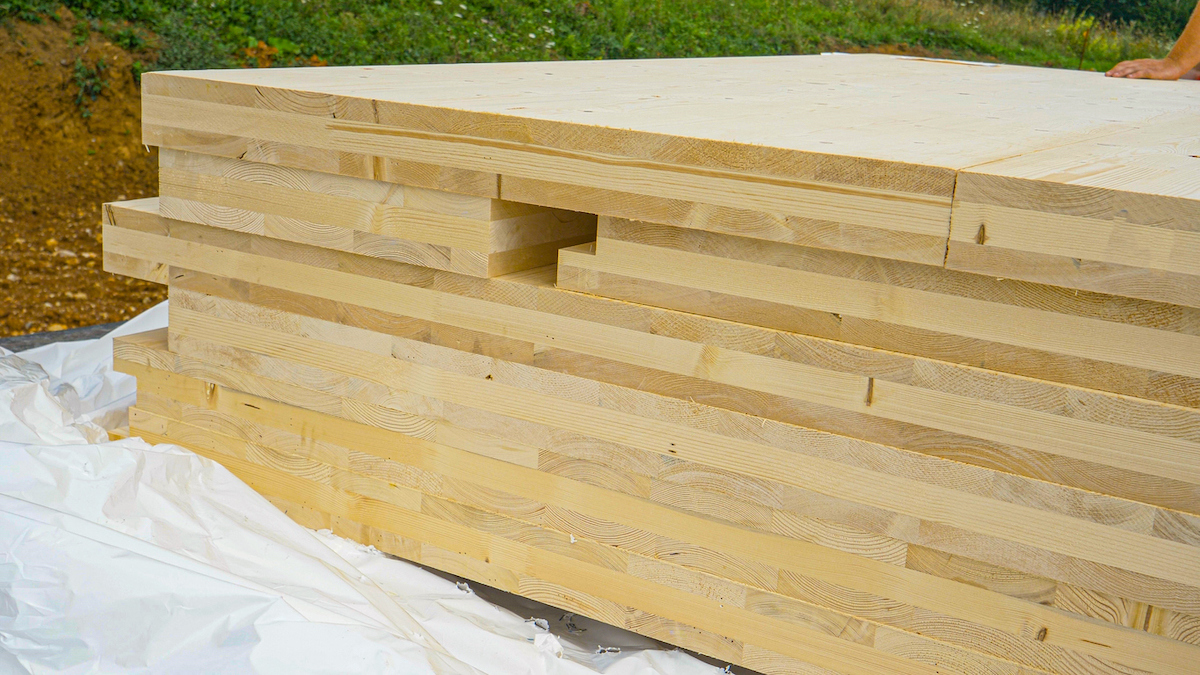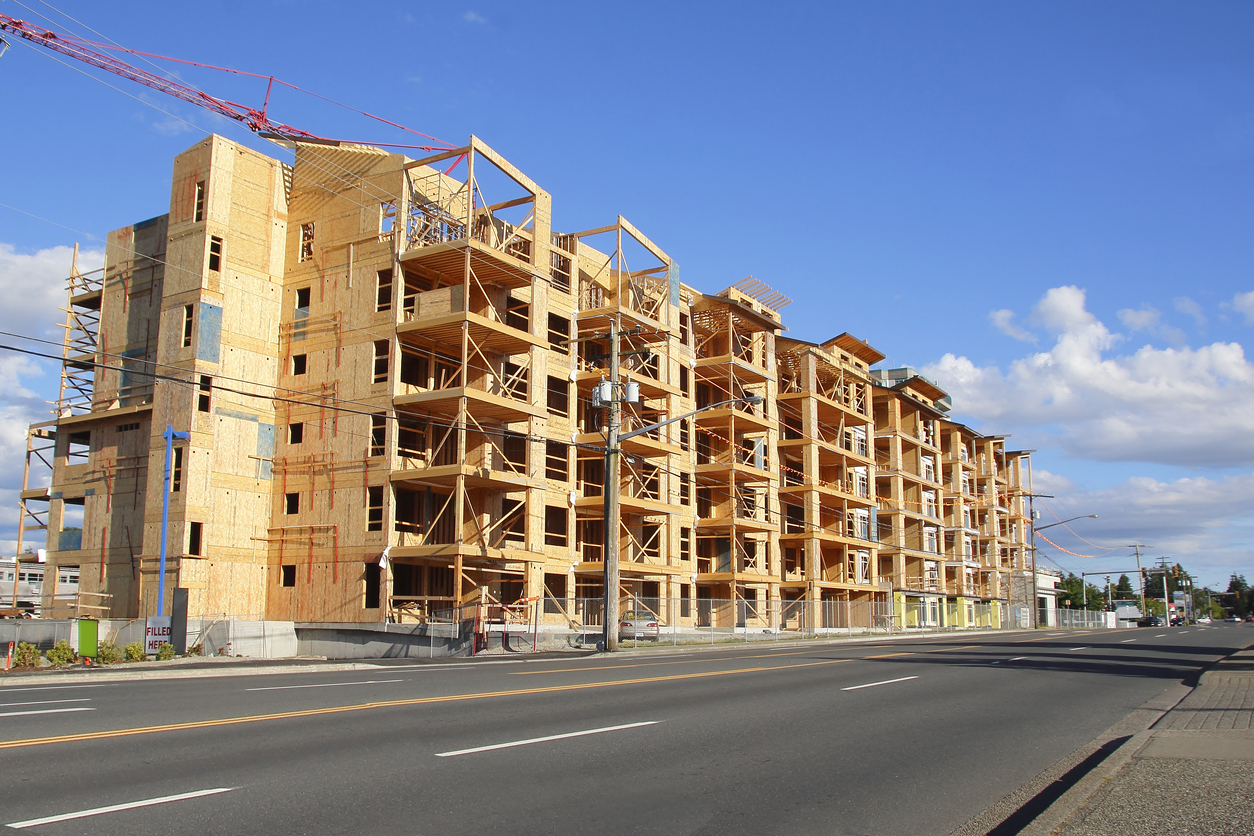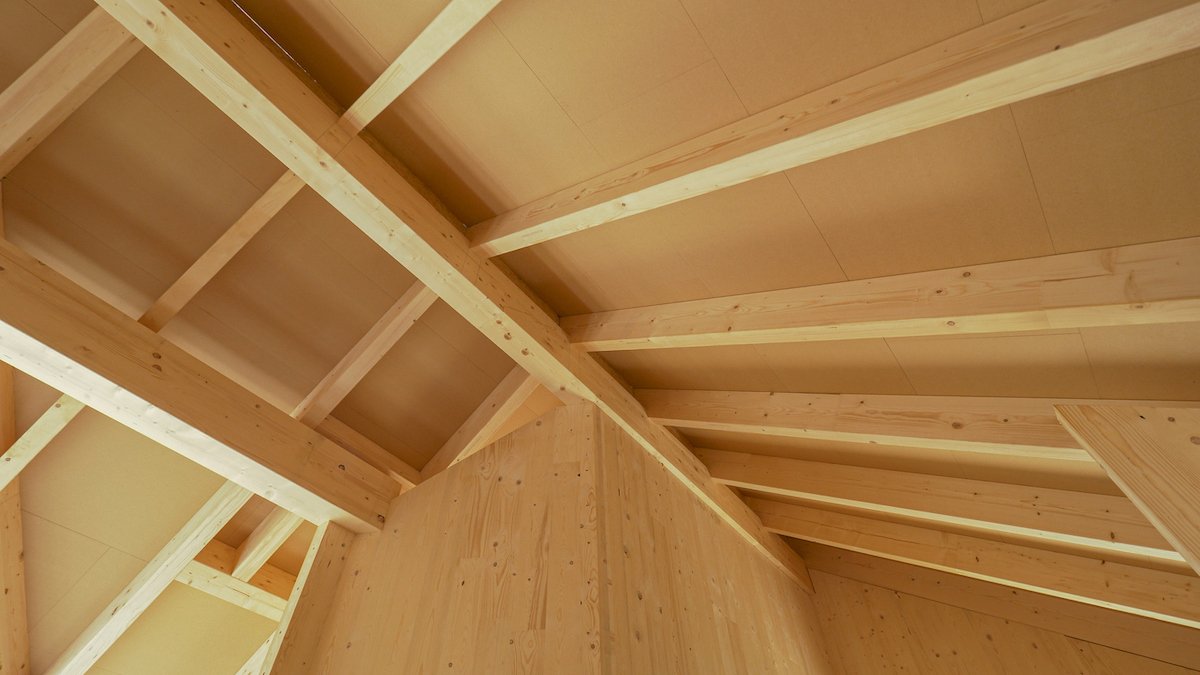We may earn revenue from the products available on this page and participate in affiliate programs. Learn More ›
With building materials being a significant contributor to carbon emissions and sustainable solutions becoming more pressing, eco-friendly construction alternatives are more important than ever. While commonly used for framing homes, wood is now finding its way into the structure of arenas, skyscrapers, and multifamily buildings in the structurally robust form of mass timber.
Recently, the International Building Code combined and updated the codes regarding heavy timber and mass timber, allowing for it to span greater distances in length and height due to new innovations. Beyond its structural ability, mass timber construction is most exciting because of its sustainable nature and potential negative carbon impact.
RELATED: 7 Important Things to Know About Pressure-Treated Wood
What is mass timber?
Mass timber (short for massive timber) is essentially thick layers of wood compressed to form a structurally sound and load-bearing material that is panelized for construction. There are different types of mass timber panels depending on how the layers are joined. These are the four main mass timber types used today:
- Cross-laminated timber (CLT) is wood joined with adhesive at perpendicular angles for dimensional stability. Its typical applications include floors, walls, and roofing.
- Nail-laminated timber (NLT) is made up of dimensional lumber boards (think 2x4s) that are mechanically fastened together with nails or screws. These timber panels are most commonly used for decking, flooring, roofing, and walls.
- Dowel-laminated timber (DLT) is made up of softwood boards fit together and held side by side with dowels inserted into pre-drilled holes. DLT is best suited for flooring and roofing.
- Glue-laminated timber (glulam) uses water-resistant adhesive to join dimensional lumber oriented in the same direction. Because the grain runs parallel, it is commonly used for beams and columns.

Mass timber construction is on the rise.
Already popular in Europe and Canada, mass timber is gaining enthusiasm from architects and builders in the U.S., mainly due to changes in building codes and its structural integrity, beauty, and sustainability. Mass timber technology was developed in forest-rich Austria during the 1990s to make use of smaller boards. The eco-friendly product’s popularity spread through Europe in the early 2000s, but it didn’t catch on in the U.S. until a decade later. This is partly because steel-frame commercial buildings and stick-frame homes are more affordable and strict building codes limited mass timber’s use in commercial structures.
In 2015, CLT was recognized in the International Building Code (IBC), which provides minimum requirements for new and existing buildings and serves as a standard for building safety across America. And following the IBC’s update in 2021 that allows for mass timber buildings up to 18 stories, the material has become a more popular option in the U.S., primarily for small office and apartment buildings.
A 25-story apartment building is near completion in Milwaukee, Wisconsin, the River Beech Tower in Chicago is a conceptual design that includes an 80-story wooden skyscraper, and the University of Idaho is enjoying its 4,000-square-foot basketball arena that’s 40 feet tall. Plus, taller mass timber buildings have also been constructed in Europe and proposed in the U.S.
RELATED: What Is FSC-Certified Wood, and Should I Buy It?
Mass timber could significantly reduce carbon emissions in the building sector.
Building materials and construction are notable contributors to environmental harm, responsible for about 11 percent of carbon emissions annually, according to the World Green Building Council. With urban growth projected to grow significantly in the coming years, prioritizing sustainable building practices is critical. When combined with responsible forestry practices, mass timber can be naturally renewable and produced with low carbon emissions.
Not only that, wood sequesters carbon, removing it from the atmosphere and storing it away, therefore helping to mitigate climate change instead of contributing to it. Mass timber is also a viable substitute for concrete and steel, two materials that make up the majority of embodied carbon emissions from the building sector today.

Building with mass timber is faster and less wasteful than conventional methods.
Mass timber can eliminate potential on-site waste as it is precisely prepared during the manufacturing process. Just like other engineering wall systems, architects and designers can share their plans, and through computer-guided fabrication, machines will precision-cut the wood to fit their specifications, even with cutouts for doors and windows.
Though a mass timber structure usually works in concert with a concrete foundation, mass timber usually weighs much less than a steel structure. This means that mass timber buildings weigh less on their foundations, often reducing the amount of foundation material and formwork needed.
RELATED: 11 Things to Know Before Visiting the Lumber Yard
Tall wood buildings can withstand seismic activity better than comparable concrete buildings.
Those living in seismic zones may wonder how mass timber performs during earthquakes. CLT structures fare exceptionally well due to the material’s flexibility and lightweight quality. For comparison, concrete works well in compression, but not well in tension. Steel works well in tension, but not well in compression.
Lighter weight may not sound like a benefit when it comes to seismic activity, but higher-mass buildings actually create greater seismic force. When compared to concrete, a timber building may also be easier to repair, as it can have a larger allowance for movement during an earthquake.

It meets code for fire safety.
Throughout history, wood has been associated with catastrophic fires; however, that association is generally made based on stick or balloon framing. Mass timber has met or exceeded fire resistance requirements, because there are many layers in which a fire must burn through.
The material initially chars on the outside, protecting interior wood from damage for a period of time that’s long enough to meet required codes. The layer that forms on the surface of wood, the char depth, is one factor used for determining the design and sizing of mass timber elements.
Mass timber can make use of low-quality wood and benefit forest management.
As the origin of mass timber stems from the desire to use smaller pieces of wood for framing, mass timber manufacturers can make use of younger trees, softwoods, and wood that may be discarded as unuseful.
Mass timber can also make use of undesirable trees, helping to thin out crowded forests and make room for better forestry practices in the future. Sustainable forestry and mass timber construction can work together in order to help maximize potential benefits to the environment. As the U.S. searches for more sustainable building options, mass timber is set to continue growing in popularity and stature.
RELATED: 15 Ways to Use Salvaged Wood in Your Home

Mass timber looks and feels more natural than steel and concrete.
Materials found in nature are stimulating to our senses. Seeing wood grain, feeling the material’s warmth, and smelling the scent of timber—these experiences can’t be replicated by steel or concrete, which look and feel colder and more industrial.
Scientific studies show that natural elements in an indoor environment help reduce stress and anxiety, which is another win for timber construction. Stand in front of a building made entirely of exposed wood and try not to be moved by its beauty.
Additional research and reporting by Theresa Clement.


